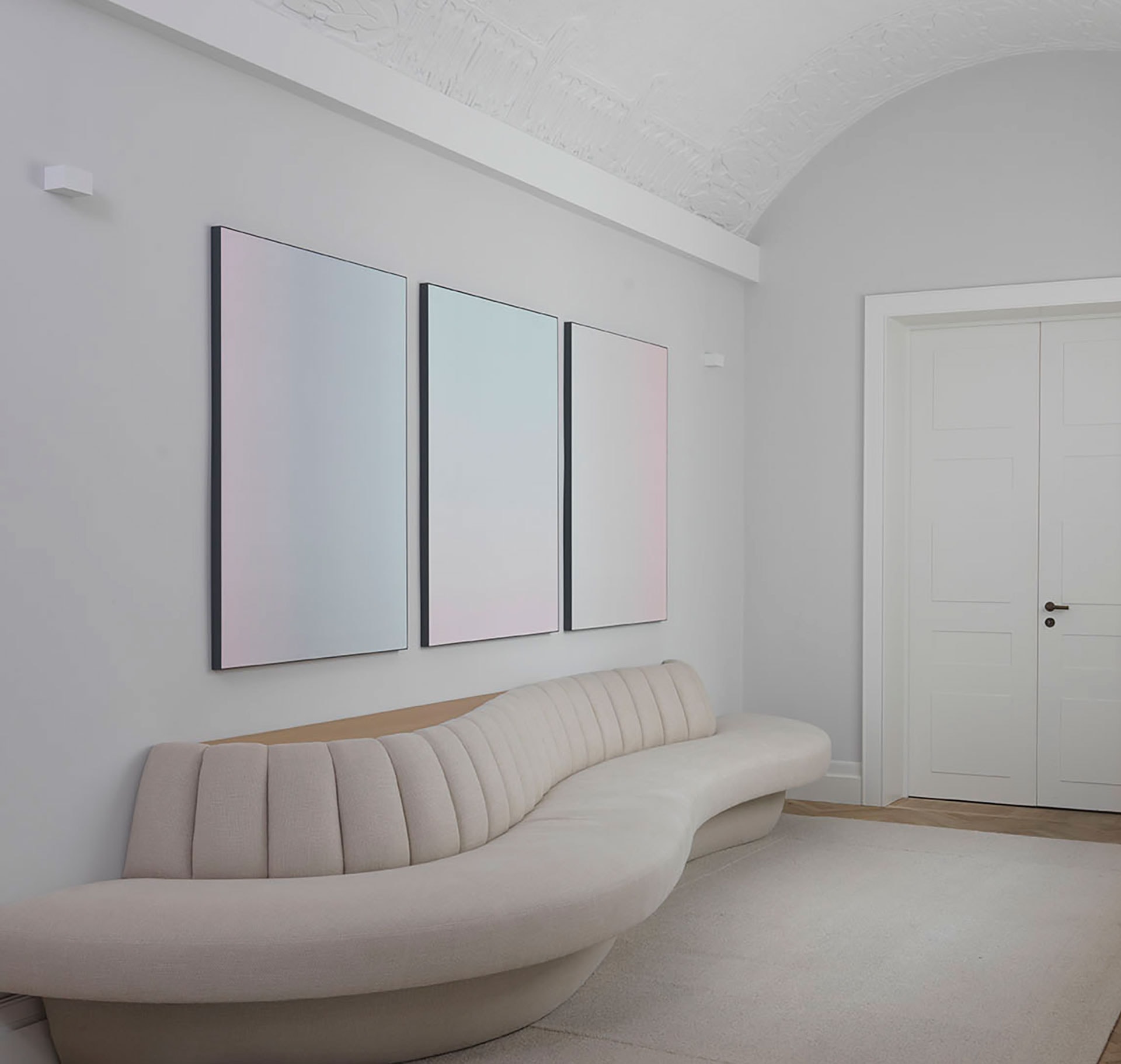All styles are good, except the tiresome kind
From classic modern art to contemporary works – Dusseldorf’s galleries boast a first-class international reputation and cater for every conceivable taste.
As well as famous collections and museums, the city also offers a host of interesting exhibition spaces where further artistic treasures can be found.
Entrepreneur Ralf Schmitz, a discerning collector of artworks both for himself and for his firm’s various stylish offices, gives us a tour of the Rhineland’s art capital.

Herr Schmitz, would you describe yourself as an art connoisseur?
Ralf Schmitz: I think I have a pretty good eye for art and I know what I like, but I don’t make any decisions without consulting my wife! We almost always visit art fairs and galleries together, that doesn’t make the purchase process any easier as we both have veto rights – all the same, neither of us will buy anything without the approval of the other. So it’s our joint collection and if anyone is an art connoisseur then it’s both of us rather than just me myself.
Why is the connection between art and architecture so important to you?
When I started building high-end apartments in the late 1970s, art was seen as a means of decorating a property, nowadays we’ve got to the point where some architects don’t want art in their buildings at all because they regard themselves as artists and their built work as art. The connection between fine art and architecture has always been important to me and projects such as our EISENZAHN I building can certainly be seen as works of art in their own right. Developed as collaborations between renowned architects, interior designers, landscape gardeners and skilled craftspeople, they offer superlative style and workmanship and feature show homes decorated with works from our own collection.
Does a love of art run in the Schmitz family?
As a young boy, I regularly came into contact with my father’s drawing. He was an architect and had naturally kept various sketches and studies from his student days, which he would show me from time to time. My father always had a very strong affinity with art – for many years, he allowed young and often little known artists to use his offices and host vernissages and exhibitions there. And he was always their first and most loyal customer, buying a picture from each of them for the firm’s collection. My role at such events was limited to that of curatorial assistant: I always helped with the hanging of the artworks.
Your father’s affinity for art presumably helped to lay the foundations for your own activity as a collector…
Of course! It helps when you’ve been introduced to art from an early age. As a young man, I always spent a lot of time in Dusseldorf, both in my private life and for work – you come into contact with art and artists everywhere you go here and that hones your appreciation of art. Today, my wife and I are members of the Gesellschaft der Freunde der Kunstsammlung NRW [the association of friends of North Rhine-Westphalia’s state art collection] and are thus able to enjoy exclusive tours of the collection’s exhibitions as well as of associated museums. But I’ve always found that travelling is also particularly instructive when it comes to learning about art and about your own taste in art. When we go abroad, we seek out galleries and museums in order to discover new art and find things we like – or that we don’t.
What styles interest you in particular?
If you look at my collection, you’ll find a whole range of styles and movements represented. Tastes develop and change over the years. When I first got interested in art, I was very taken with the Expressionist paintings of Hans Purrmann, whereas now my preference is increasingly for contemporary art and for the work of Karin Kneffel in particular. That apart, you might detect a certain local bias in our collection. There are works by the likes of Adolf Luther, Herbert Zangs and Dieter Krieg – most of the artists are either from the Rhineland originally or lived or worked here.
Is there a gallery that you rarely visit without coming away with another art bundle under your arm?
I buy maybe one work per year, sometimes none. Often my wife and I take a bit of time to mull over a new picture or sculpture, and sometimes also to ponder its price, but then it will give us pleasure for a very long time. We frequently find something we like at Galerie Schönwald; their excellent roster of artists means I often find it hard to leave empty-handed. But like I said, I’m very choosy and have high standards and so I’m really not an impulse buyer. They say an artwork often finds its collector, rather than the other way round.
Do you think you can distinguish between “good” and “bad” art?
Voltaire once said: “All styles are good, except the tiresome kind.” I couldn’t agree more.
Which pictures are particularly dear to you?
The early works of my children.